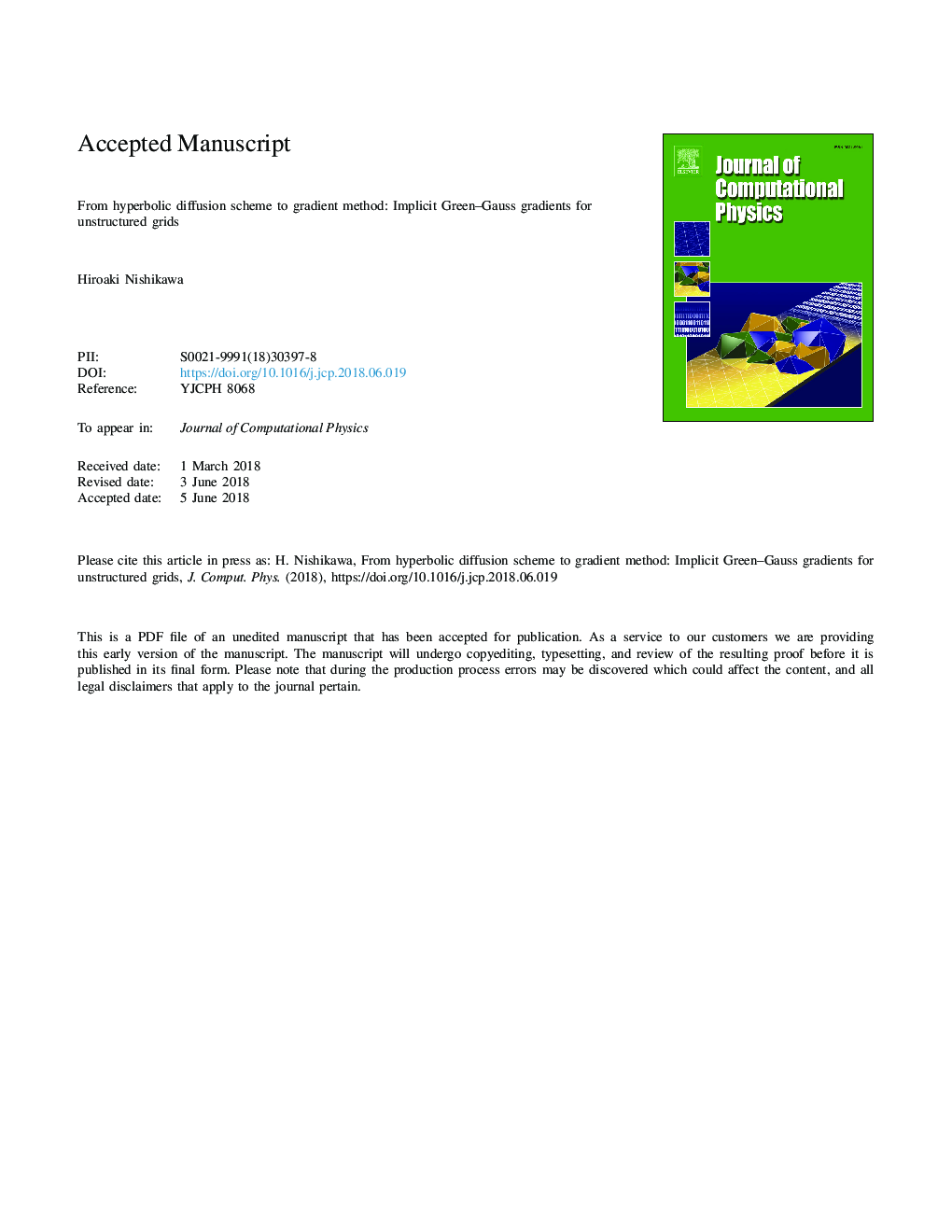| Article ID | Journal | Published Year | Pages | File Type |
|---|---|---|---|---|
| 6928579 | Journal of Computational Physics | 2018 | 43 Pages |
Abstract
This paper introduces a new approach to constructing algorithms for gradient computations on unstructured grids. The proposed approach is to derive a gradient algorithm from a hyperbolic diffusion scheme, which solves the diffusion equation and equations for the solution gradient, by ignoring the residual component for the diffusion equation. The resulting scheme forms a globally coupled linear system of equations for the gradients with the Green-Gauss gradient formula on the right hand side, which can be solved efficiently by iterative techniques. Accuracy and iterative performance can be controlled by parameters inherited from the generating hyperbolic diffusion scheme. Second- or fourth-order gradient accuracy can be obtained on regular grids, and first-order accuracy, which is sufficient for second-order finite-volume schemes, can be obtained on irregular grids. Numerical results indicate that the method gives highly accurate gradients especially for highly-curved high-aspect-ratio grids typical in high-Reynolds-number boundary layer flows over complex geometries, and can be employed in finite-volume solvers as an efficient alternative to least-squares or Green-Gauss gradient methods. It is also shown that one of the parameters has a role of dissipation, and can be tuned to yield a smooth gradient distribution over a discontinuous function, thereby allowing an implicit finite-volume solver to converge for a discontinuous solution with a mild overshoot. The paper concludes with a discussion for future developments.
Related Topics
Physical Sciences and Engineering
Computer Science
Computer Science Applications
Authors
Hiroaki Nishikawa,
